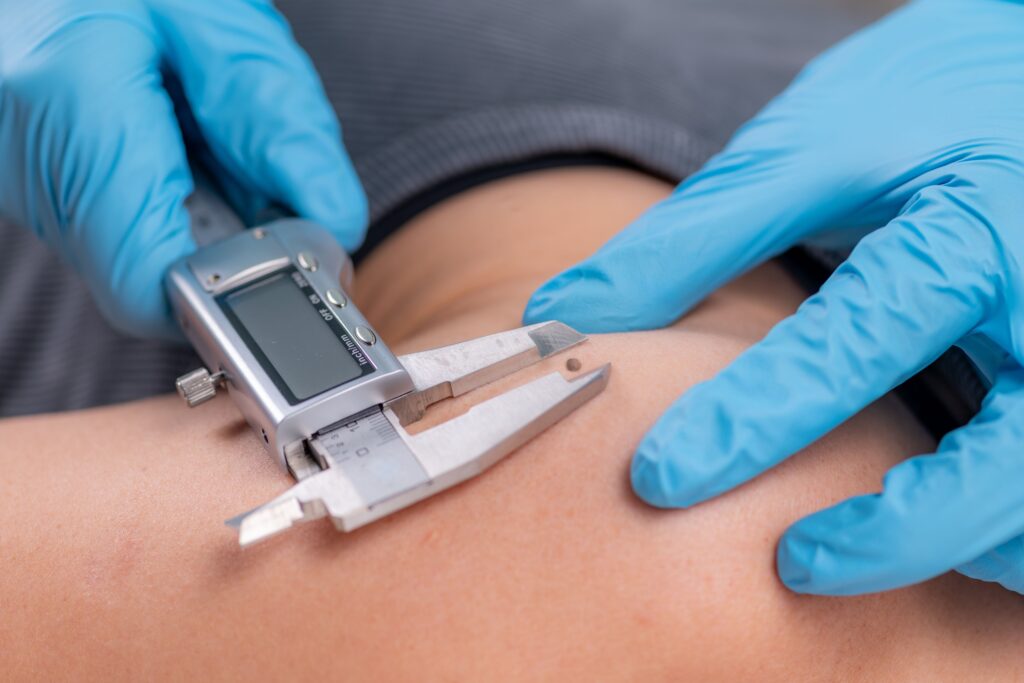Introduction
Basal cell carcinoma (BCC) is the most common form of skin cancer, typically developing on sun-exposed areas of the skin. While surgical procedures like excision and Mohs surgery are traditional treatments for basal cell carcinoma, non-surgical alternatives have gained popularity for their effectiveness and lower risk of scarring. In this blog post, we’ll delve into five non-surgical options: 5-fluorouracil, imiquimod, photodynamic therapy, tazorac, acetretin, and radiation, highlighting their dosage, delivery methods, and success rates.
5-Fluorouracil (5-FU)
5-fluorouracil is a topical chemotherapy agent that interferes with the growth of abnormal cells. It is applied directly to the affected skin for several weeks. The recommended dosage varies, but a typical regimen involves applying the cream once or twice daily. Success rates are high, with studies reporting clearance rates ranging from 70% to 90%. Some side effects may include redness, inflammation, and crusting at the application site.
Imiquimod
Imiquimod is an immune response modifier that stimulates the body’s natural defenses against cancer cells. Typically available as a cream, imiquimod is applied to the affected area several times a week for a specified period. The success rates for imiquimod range from 75% to 90%. Side effects may include redness, swelling, and flu-like symptoms, but they are generally mild.
Photodynamic Therapy (PDT)
Photodynamic therapy involves the use of a photosensitizing agent and light to destroy cancer cells. A photosensitizing cream or solution is applied to the lesion, followed by exposure to a specific wavelength of light. PDT has shown success rates of around 80% for superficial BCCs. Side effects may include redness, swelling, and temporary sensitivity to light.
Tazorac (Tazarotene)
Tazorac is a topical retinoid that regulates cell growth and differentiation. It is applied once daily for several weeks. Success rates for Tazorac vary, with studies suggesting clearance rates of approximately 70%. Side effects may include redness, peeling, and irritation.
Acetretin (Soriatane)
Acetretin, an oral retinoid, is sometimes prescribed for the treatment of basal cell carcinoma. The recommended dosage varies, but it is typically taken daily for a specified period. Success rates are not as well-documented as with topical treatments, but some studies suggest effectiveness in certain cases. Side effects may include dry skin, mucous membrane dryness, and elevated cholesterol levels.
Radiation Therapy
Radiation therapy utilizes targeted X-rays to destroy cancer cells. It is often reserved for cases where surgery is not feasible. The dosage and duration of radiation therapy depend on the specific characteristics of the tumor. Success rates for radiation therapy are generally high, with reported cure rates ranging from 85% to 95%. Skin reactions, similar to sunburn, are common side effects.
Conclusion
Non-surgical options for treating basal cell carcinoma provide viable alternatives to traditional surgical procedures. Each option comes with its own set of considerations, including dosage, application methods, and potential side effects. Consultation with a dermatologist is crucial to determine the most suitable treatment plan based on individual factors such as the size, location, and type of the basal cell carcinoma. As research progresses, these non-surgical approaches continue to offer promising results, providing patients with effective and less invasive options for managing this common form of skin cancer.

